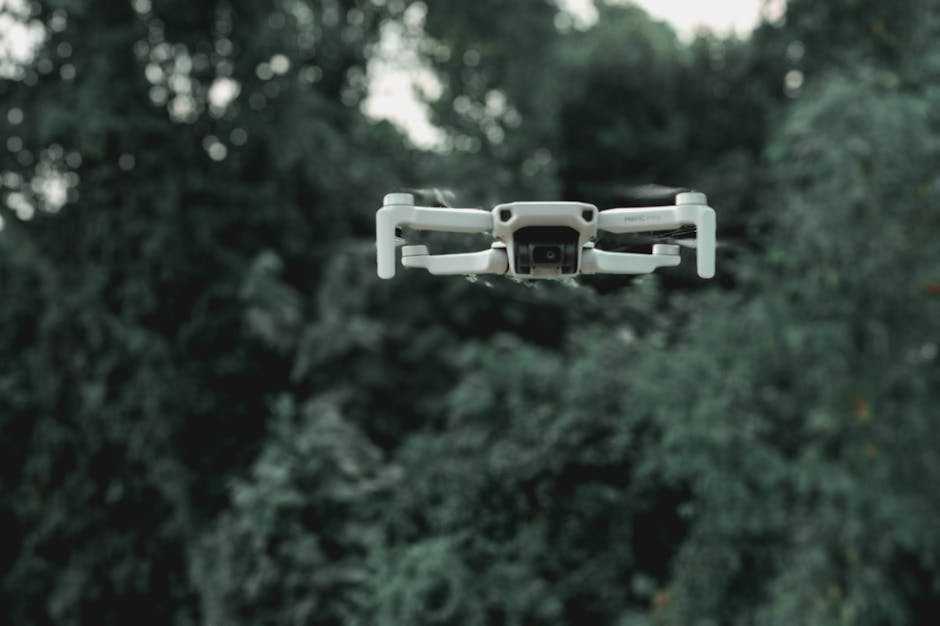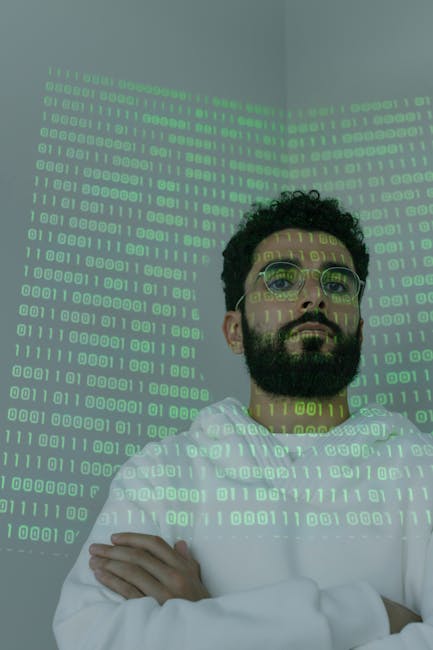Unlock encrypted content
Please enter your SSCE key to initiate on-the-fly decryption.
Decryption key: (Click cancel if you don't have the key)
Copied link to clipboard.
This feature is unavailable for free accounts. Upgrade now and enjoy all Premium benefits.
Go Premium!
This feature is unavailable for free accounts. Upgrade now and enjoy all Premium benefits.
Go Premium!
Please open this page in browser ( Google Chrome or Safari ) to use this feature.
Open In Browser
Transforming the Future: Exploring Genetic Engineering, Music Streaming, and Wearable Technology.
Random related video for this blog.
Copied share link to clipboard.
The intersection of technology and human creativity is rapidly evolving.
Genetic Engineering and Its Implications
Genetic engineering has emerged as a groundbreaking field, revolutionizing our understanding of biology and its applications. This technology enables scientists to manipulate an organism's DNA, enhancing or altering its traits. For instance, genetically modified organisms (GMOs) in agriculture have been developed to resist pests and withstand harsh environmental conditions, leading to increased food production and sustainability. One notable example is the creation of Bt cotton, which has significantly reduced the need for chemical pesticides, showcasing the potential of genetic engineering in addressing global food security challenges. In the medical realm, genetic engineering has opened doors for innovative treatments. Techniques such as CRISPR-Cas9 allow for precise editing of genes, offering hope for curing genetic disorders. A prominent case study is the use of CRISPR to treat sickle cell anemia, where researchers successfully edited the genes of patients to produce healthy red blood cells. This transformative approach not only highlights the potential of genetic engineering in healthcare but also raises ethical questions about the extent to which we should modify human genetics. As we delve deeper into the implications of genetic engineering, the conversation must also include the societal impact. The ability to edit genes could lead to a new era of "designer babies," where parents might choose specific traits for their offspring. This raises significant ethical dilemmas about equity, access, and the definition of normalcy in human traits. Therefore, while genetic engineering holds immense potential, it is imperative to approach its development with caution, ensuring regulations and ethical guidelines are in place to navigate the complexities of this powerful technology.Generative Adversarial Networks (GANs) and Creativity
Generative Adversarial Networks (GANs) represent a remarkable advancement in artificial intelligence, enabling machines to create content that mimics human creativity.GANs consist of two neural networks: a generator that creates images or music, and a discriminator that evaluates the authenticity of the generated content. This dynamic duo has led to impressive applications in various fields, particularly in art and music. In the realm of music streaming, GANs are being utilized to generate original compositions that resonate with human emotions. Platforms like OpenAI's MuseNet have demonstrated the capability to create complex musical pieces in various styles, from classical to jazz. For instance, a GAN could analyze thousands of classical compositions and generate a new symphony that feels both innovative and familiar to listeners. This technology not only expands creative possibilities but also challenges our perceptions of authorship and originality in music. Moreover, GANs have found applications in digital art creation. Artists are increasingly using GAN-generated visuals to inspire their work, blending human creativity with machine learning. A notable example is the collaboration between artists and GANs to produce unique artworks that have even been sold at auctions for significant sums. This intersection of technology and art raises intriguing questions about the future of creative industries and the role of human artists in a world where machines can create. As GANs continue to evolve, they may redefine how we approach creativity, collaboration, and the very essence of artistic expression. The implications of this technology extend far beyond music and art, potentially transforming industries like fashion, design, and advertising, as businesses leverage AI to enhance their creative processes.
Music Streaming: The Future of Listening
Music streaming has fundamentally changed how we consume music, providing unprecedented access to a vast library of songs and artists at our fingertips. Services like Spotify and Apple Music have revolutionized the industry, allowing users to explore diverse genres and discover new artists effortlessly. This shift from physical media to digital streaming has reshaped the economic landscape of the music industry, impacting how artists monetize their work. One of the most significant trends in music streaming is the rise of personalized playlists and recommendations. Leveraging data analytics and machine learning, platforms can analyze user behavior and preferences to curate tailored playlists. This not only enhances the listening experience but also fosters deeper connections between artists and their audiences. For instance, Spotify's Discover Weekly playlist introduces users to new music based on their listening history, creating a sense of musical exploration and discovery. However, the music streaming model has also sparked debates regarding artist compensation. While streaming services provide exposure for emerging artists, the revenue distribution model has been criticized for favoring established musicians. As a result, many independent artists are seeking alternative ways to monetize their work, such as direct fan engagement through platforms like Patreon or Bandcamp. This shift highlights the need for a more equitable system that acknowledges the contributions of all artists, regardless of their mainstream success. As technology continues to evolve, the future of music streaming will likely incorporate innovative features, such as virtual reality concerts and immersive listening experiences. The integration of wearable technology, such as smart headphones and augmented reality glasses, could further enhance how we experience music, creating a more interactive and engaging environment for listeners.Neurotechnology and Its Transformative Potential
Neurotechnology encompasses a range of technologies designed to interface with the nervous system, offering profound implications for healthcare, communication, and even entertainment. This field has seen significant advancements in recent years, particularly in brain-computer interfaces (BCIs), which allow individuals to control devices using their thoughts. For example, researchers have developed BCIs that enable paralyzed individuals to control robotic limbs or computer cursors, restoring a level of autonomy that was previously unimaginable. One of the most compelling case studies in neurotechnology is the work being done with individuals suffering from neurological disorders, such as ALS (Amyotrophic Lateral Sclerosis). Companies like Neuralink are pioneering efforts to create implantable devices that can decode brain signals and translate them into commands for computers or other devices. This technology not only has the potential to improve the quality of life for individuals with disabilities but also raises ethical considerations about privacy and consent. Beyond healthcare, neurotechnology is finding applications in entertainment and education. For instance, neurofeedback devices can help users improve focus and cognitive performance by providing real-time data on brain activity. This has led to the development of immersive gaming experiences that adapt to the player's mental state, creating a more engaging and personalized gaming environment. Furthermore, educational platforms are exploring the use of neurotechnology to enhance learning outcomes, tailoring content to individual cognitive abilities and needs. As we look to the future, the integration of neurotechnology with wearable devices may redefine how we interact with technology daily. Imagine a world where wearable technology can monitor brain activity and provide real-time feedback, optimizing productivity and well-being. The possibilities are vast, but they also require careful consideration of the ethical implications and potential risks associated with these advancements.Wearable Technology: The Next Step in Personal Health
Wearable technology has gained traction as a powerful tool for monitoring health and wellness. Devices like smartwatches and fitness trackers enable users to track their physical activity, heart rate, sleep patterns, and more. This shift towards personal health monitoring has encouraged individuals to take an active role in managing their health, leading to improved outcomes and increased awareness. A noteworthy example of wearable technology's impact is its role in chronic disease management. For instance, diabetes patients can use continuous glucose monitors (CGMs) to track their blood sugar levels in real time, allowing for better management of their condition. By providing instant feedback, these devices empower patients to make informed decisions about their diet and medication, ultimately leading to healthier lifestyles. Furthermore, wearable technology is evolving to include advanced features such as stress monitoring and mental health assessments. Devices equipped with sensors can track physiological indicators of stress, providing users with insights into their mental well-being. This integration of health monitoring into daily life encourages individuals to prioritize their mental health, fostering a holistic approach to wellness. As wearable technology continues to advance, we can expect to see even more innovative applications. For instance, the integration of neurotechnology with wearables could lead to devices that not only monitor physical health but also provide insights into cognitive performance and emotional state. This convergence of technologies has the potential to transform how we approach health and wellness, creating a more interconnected and proactive approach to personal care.File Transfer Solutions: Enhancing Digital Interactions
In our increasingly digital world, the need for efficient file transfer solutions has never been more critical. With the rise of remote work and digital collaboration, tools that facilitate seamless file sharing are essential. Platforms like FileLu have emerged to meet this demand, offering easy-to-use solutions for users to transfer and store files securely. FileLu provides a range of services, including the ability to send large files directly to a folder, making it an ideal choice for businesses and individuals alike. With capabilities to transfer files up to 10 GB for free users and no limit for premium users, FileLu ensures that users can share content without the constraints of traditional email attachments. This flexibility is particularly valuable for professionals who need to send high-resolution images, videos, or large datasets. Moreover, FileLu emphasizes security and privacy, employing SSL encryption and offering Secure Solo Cipher Encryption (SSCE) for added protection. In an era where data breaches are a growing concern, having a secure file transfer solution is paramount. File access auditing features further enhance security, allowing users to monitor who has accessed their files and when. As the landscape of digital communication evolves, file transfer solutions will likely integrate with other technologies, such as cloud storage and online backup systems. This convergence will create a more cohesive ecosystem for managing digital assets, ensuring that users can access, share, and protect their files effortlessly.Conclusion: Embracing the Future of Technology
The rapid advancements in genetic engineering, music streaming, neurotechnology, and wearable technology are reshaping our world in profound ways. As we navigate this technological landscape, it is essential to consider the ethical implications and societal impacts of these innovations. Embracing these changes while prioritizing responsible development will ensure that we harness the full potential of technology for the betterment of humanity. In addition, the integration of file transfer solutions, such as those offered by FileLu, plays a pivotal role in facilitating communication and collaboration in our digital age. By prioritizing security and user experience, FileLu empowers individuals and businesses to share files with confidence, contributing to a more connected and productive society. As we look to the future, staying informed and engaged with these technological trends will be crucial. By understanding the implications of these advancements, we can make informed decisions that shape a better future for all.Frequently Asked Questions (FAQs)
Question: What is genetic engineering? Answer:
Genetic engineering is the manipulation of an organism's DNA to alter its traits.
Question: How do Generative Adversarial Networks (GANs) work? Answer:
GANs consist of two neural networks that compete to create realistic content.
Question: What are the benefits of wearable technology? Answer:
Wearable technology helps monitor health, fitness, and well-being in real time.
Question: How can I securely transfer large files? Answer:
Using platforms like FileLu, you can transfer large files securely and easily.
By Amelia Isabella
Email: [email protected]
Related
Cybernetics: Revolutionizing Data Storage and Management with FileLu Cloud Storage
July 18, 2023
Read More
File Collaboration and Access Control: Empowering Galactic Empires in the...
July 18, 2023
Read More
Autonomous Driving and Brain-Computer Interfaces: A Glimpse into the Future...
July 18, 2023
Read More
Data Redundancy: Advanced Weaponry for Autonomous Vehicles and Space Data...
July 18, 2023
Read More
The Future of Work: Exploring Genetic Algorithms, Advanced Encryption, and...
July 18, 2023
Read More
Robotic Process Automation: Revolutionizing Efficiency and Productivity in the Digital...
July 18, 2023
Read More
FileLu.com: The Reliable Cloud Storage Solution for Secure File Management...
July 18, 2023
Read More
Popular
The Future of File Management: Embracing Edge Computing and Efficient...
November 12, 2025
Read More
Exploring the Intersection of Technology: From Cybersecurity to Augmented Reality...
November 16, 2025
Read More
The Future of File Sharing: Streamlined Workflows for Photographers and...
November 19, 2025
Read More
The Future of Technology: Exploring Biohacking, Space Tourism, and Digital...
November 23, 2025
Read More
Exploring the Benefits of Cloud Storage and Innovative Technologies in...
November 26, 2025
Read More
The Future of Digital Transformation: Exploring Smart Homes, Efficient File...
November 30, 2025
Read More
Latest
The Future of Digital Transformation: Exploring Smart Homes, Efficient File...
November 30, 2025
Read More
Exploring the Benefits of Cloud Storage and Innovative Technologies in...
November 26, 2025
Read More
The Future of Technology: Exploring Biohacking, Space Tourism, and Digital...
November 23, 2025
Read More
The Future of File Sharing: Streamlined Workflows for Photographers and...
November 19, 2025
Read More
Exploring the Intersection of Technology: From Cybersecurity to Augmented Reality...
November 16, 2025
Read More
The Future of File Management: Embracing Edge Computing and Efficient...
November 12, 2025
Read More
The Future of File Sharing: Exploring User-Friendly Solutions and Data...
November 5, 2025
Read More
The Future of Cloud Storage: How FileLu Empowers Creative Professionals...
November 2, 2025
Read More
The Future of Autonomous Technologies: Innovations in Robotics, File Sharing,...
October 29, 2025
Read More
Emerging Technologies Revolutionizing File Management: From Li-Fi to Robust Collaboration...
October 26, 2025
Read More
Emerging Technologies: Exploring the Impact of File Access Auditing, Genetic...
October 19, 2025
Read More
The Future of Data Storage: Exploring Advanced Encryption, Mobile Integration,...
October 5, 2025
Read More
Exploring the Future of Data Management: Security, Efficiency, and Cognitive...
September 28, 2025
Read More
Revolutionizing Data Management: Innovations in Storage, Security, and Sustainable Technology.
September 24, 2025
Read More














